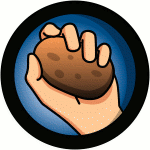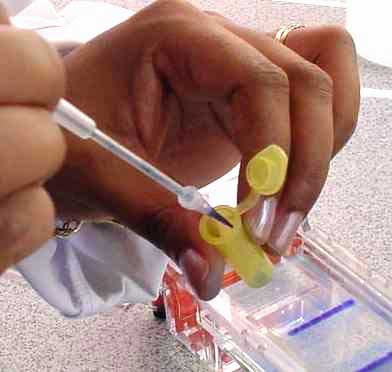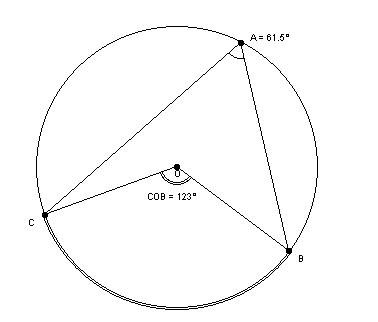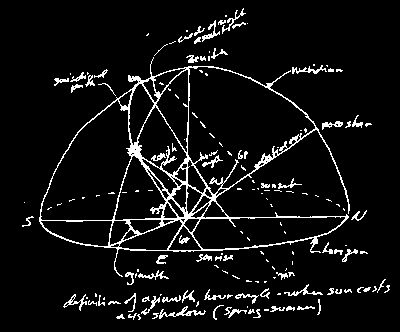January 11th, 2006

Hot Potatoes is a program for Windows (and Mac OS X as a Java package) that can author a range of types of quizzes. Quizzes can be exported as Web pages, as text pages, and in formats that will load into the WebCT VLE. Moodle can parse the WebCT files. The program is written by two ESOL teachers, and the quizzes available include multiple choice, gap completion, crosswords, a primititive non graphical matching exercise, and a few others. The ESOL backgound of the package is visible in the availability of ‘reading texts’ that can be displayed alongside a quiz. You can write comprehensive material by putting the information in ‘readings’ and by adding quizzes alongside. There is no server-side tracking of scores within the package as yet.
If you want to install Hot Potatoes on your own computer, just download the package from the Web site and follow the instructions…
- Hot Potatoes download page – pick the ‘Hot Potatoes 6 self-extractor’
- When this file has downloaded, just double click on the icon to start the installation process
- Then fill in the form to get a registration code (no cost)
- If you get stuck, lob me an e-mail and I’ll talk you thru’ the process
You can use Hot Potatoes for nothing, but the licence requires you to place the quizzes you produce on a public Web site. I can arrange to upload your quizzes on this site to satisfy that requirement – but Hot Potatoes are themselves arranging server space with the added attraction that scores can be tracked.
The site has Hot Potatoes tutorials available, the Standard Tutorial for Windows is a good place to start.
Posted in ILT, Maths | Comments Off
January 10th, 2006

A survival pack for level 3 science students would need to contain material on proportional parts (‘if 15 oranges cost ¬£1.50, how much should 8 oranges cost?’), standard form, metric units, conversions between metric units, derived units (e.g. density or speed distance and time) and substituting into simple formulas (e.g. density of ball bearing calculated from diameter of the bearing measured with a micrometer and the mass as found using a top-pan balance). Basic coverage of averages (measure the ball bearing several times using different diameters and take the mean, noting the range).
Graph work would need to warn students of the various different types of graph in circulation – and the fact that some Biology teachers can display stress symptoms if you plot axes in a way they don’t like. Seriously, interpreting cardiac pressure traces is a common exam question. I’d probably throw in scatter diagrams, line of best fit, and maybe the straight line graph as a way of getting a formula for the line of best fit.
The proportional parts would be applied to very simple molar mass calculations such as: roughly how many moles of Sodium Chloride are there in 5g of table salt? (5g divided by (35.45 + 22.99)).
Note added 11th Jan: our local Chemist has added rates of change and solving linear equations to the list. He is happy with rates of change found graphically using mirrors or glass rods to find the tangent. Rates of change for curved graphs is a natural extension to the straight line graph so this should be OK. I managed to convince my colleague that logs and exponential functions were probably a bit hard for this introductory package.
Posted in Maths | Comments Off
January 9th, 2006

Ron Blond based in Edmonton in Canada has provided Java applets that illustrate some of the ‘circle theorems’. These facts about lines in circles and the relationships between the angles in a circle always cause trouble when teaching GCSE classes. I suspect that being able to drag lines and points around to explain what changes and what stays the same may be useful.
The geometry applet may allow the same kind of demonstration to be built with thicker lines making it more suitable for projector use.
Posted in Maths | Comments Off
January 8th, 2006
As a result of the Charles Kennedy hunt (I suppose hunting politicians in the media is less cruel than hunting foxes with dogs – now theoretically illegal in England and Wales) I have just visited Vincent Cable’s Web site. He has a blog of sorts, and a download area where you can get the Word files of articles he writes for various newspapers – usually in Word format (why not PDF, plain text, or RTF for heaven’s sake, but I suppose it is all about convenience).
One recent article concerns the economics of nuclear power – a subject that may become topical soon.
Contrast Cable’s thoughtful (if occasionally typo ridden) essay with George Galloway’s antics. Respect is something I was interested in, and our local candidate came within spitting distance of unseating our local MP - but displacing a popular and effective constituency MP with a showman is not going to help build the Party. Perhaps thinking about energy costs and demand in the future might.
End of rant. Back to Maths soon.
Posted in Notes | Comments Off
January 7th, 2006
“In 1822 two Britons (Sampson Mordan and John Hawkins) developed and patented the first mechanical pencil mechanism to propel a writing core thru a shaft allowing people to write with it. We call this device a mechanical pencil. Growing in popularity across the globe, Tokuji Hayakawa, a metal worker in Japan refined the casing using metal and sold his version as ‚ÄúEver-Sharp Pencil‚Äù. It sold in such great numbers that he founded a company based on the name of the pencil… Sharp.”
I suppose mechanical pencils had to be invented by someone. I used to like using a ‘clutch pencil’ with the chunky lead when I was at school. The diyplanner site has a range of calendar and diary designs that can be downloaded as PDF files. The A4 set might be useful for logging activity as it happens as well as planning.
Posted in Notes | Comments Off
January 2nd, 2006

- The Robert Frank coloring book is a series of outline drawings by Jno Cook based on Robert Frank’s book The Americans
- Jno Cook was trying to make a case about the interpretation of Frank’s book
- The rest of Cook’s web site is interesting – he is an artist and fully paid up member of the US Awkward Squad by the look of his site.
- I like the diagrams one of which I have appropriated here.
- His student work page says a lot about where he is coming from (and it looks like a good place), and I loved the Happy Birthday Robert Frank assignment

Posted in Photos | Comments Off
January 1st, 2006
Posted in Photos | Comments Off






